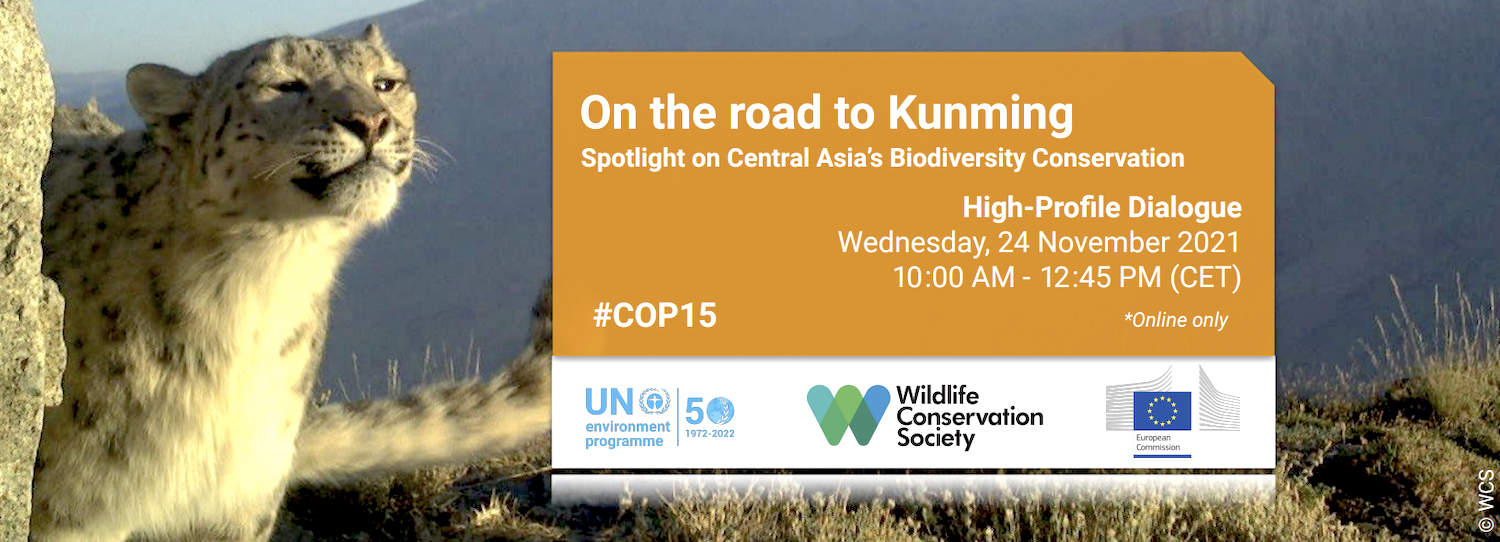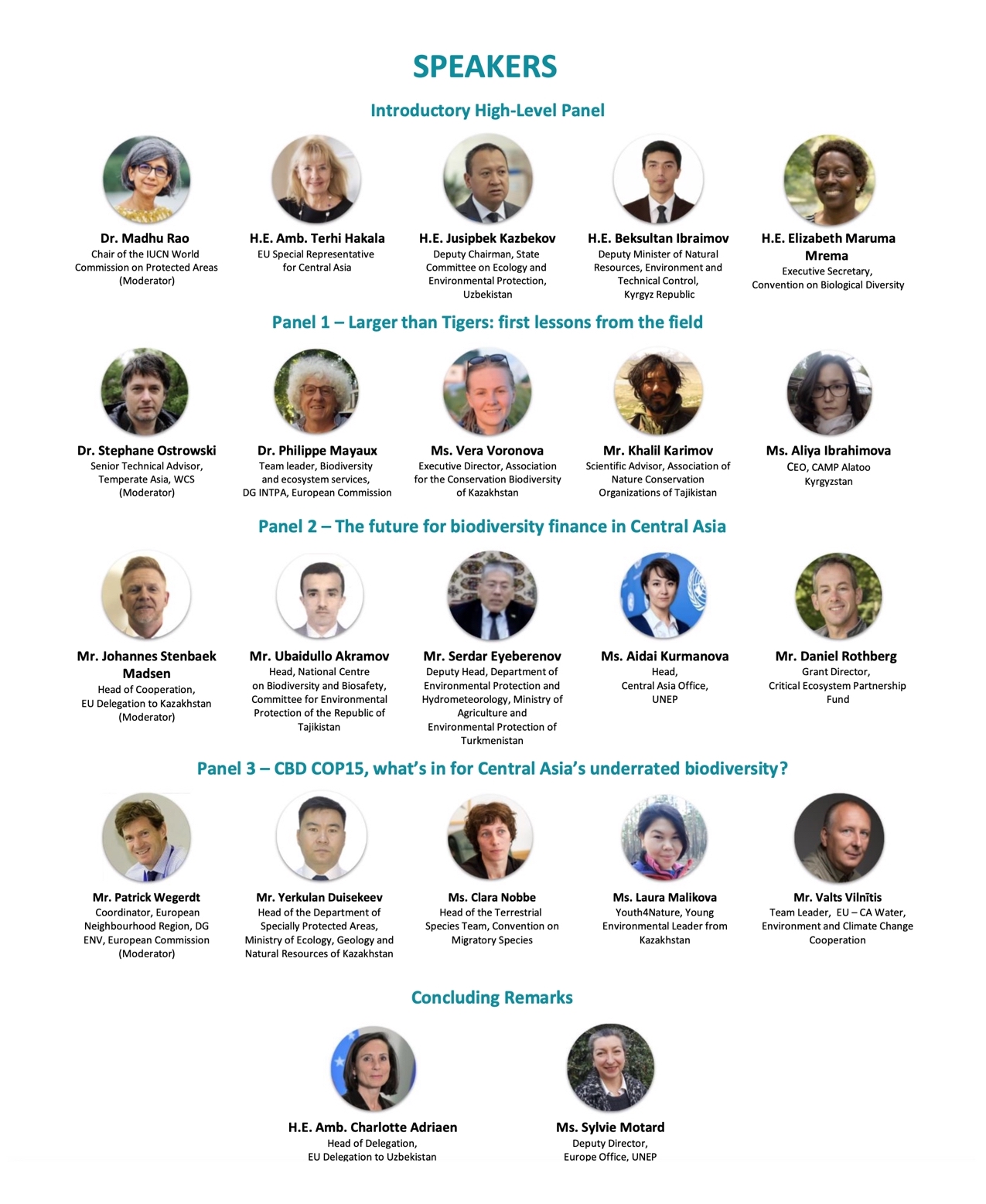
On the road to Kunming
Spotlight on Central Asia’s Biodiversity Conservation
Virtual high-profile dialogue
Central Asia, here defined as countries of Afghanistan, Kazakhstan, Kyrgyzstan, Tajikistan, Turkmenistan and Uzbekistan, and the central and eastern portion of Iran is often underrated as an area of significant biodiversity. Yet it is a region dominated by some of the world’s largest remaining areas of steppe and desert, but also with important wetland and key mountain ecosystems vital to water requirements of people of Asia. Located at the junction of three of the world’s bio-geographic realms the area has also evolved biodiversity unique to humanity. This region has experienced dramatic political changes in the last 40 years and a significant proportion of its populations remains exposed to rural poverty, relying heavily on natural resources for its subsistence and livelihood.
In 2018, the European Union (EU) commissioned the study Larger than Tigers: Inputs for a strategic approach to biodiversity conservation in Asia aimed at enhancing coherence and coordination of EU actions in the area of biodiversity and ecosystems in Asia. As the title of the report suggests, the conservation of biodiversity extends far beyond the survival of iconic animals such as tigers. Vanishing species are important components of complex natural ecosystems that are critical for the livelihoods of local communities and provide water and food, regulate climate, benefit the health and well-being of people, process waste products, pollinate crops, and support a growing tourism industry.
Organized on 24th November 2021 by the United Nations Environment Programme (UNEP) and the Wildlife Conservation Society (WCS), with the support of the European Commission, the high-profile dialogue ‘On the road to Kunming - Spotlight on Central Asia’s Biodiversity Conservation’, highlighted in three 45-minute sessions, examples of positive initiatives taking place across the region thanks to partnerships built between civil society organizations and governments, communities, and businesses. Participants also discussed the ongoing and future financial opportunities supporting investment for biodiversity conservation, and highlighted opportunities and the role of Central Asia’s biodiversity in the post-2020 Global Biodiversity Framework (GBF).

This event aimed to strengthen partnerships, build networks and provide directions to help policy-makers, donors, and other relevant stakeholders make more informed decisions when developing policies, plans and programs at national and regional level in Central Asia. It also provided a platform to raise awareness about the EU Green Deal, which aims to ensure resilience to future threats and put biodiversity on the path to recovery by 2030 for the benefit of people, climate and the planet, and build regional momentum in the run-up to the 15th meeting of the Conference of the Parties to the CBD (COP 15).
A report of the conference is available in English and Russian and the video recording is available in English and Russian.